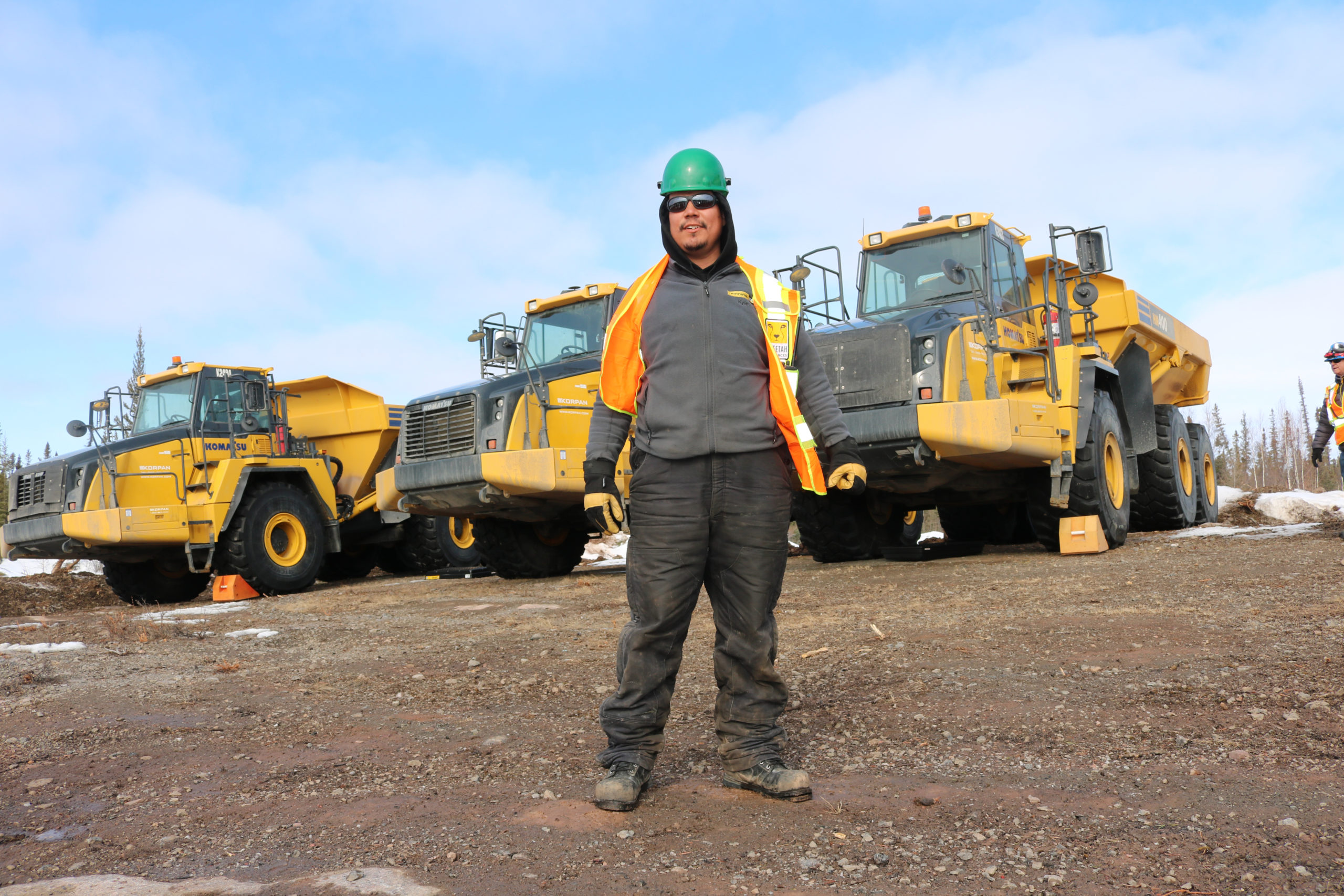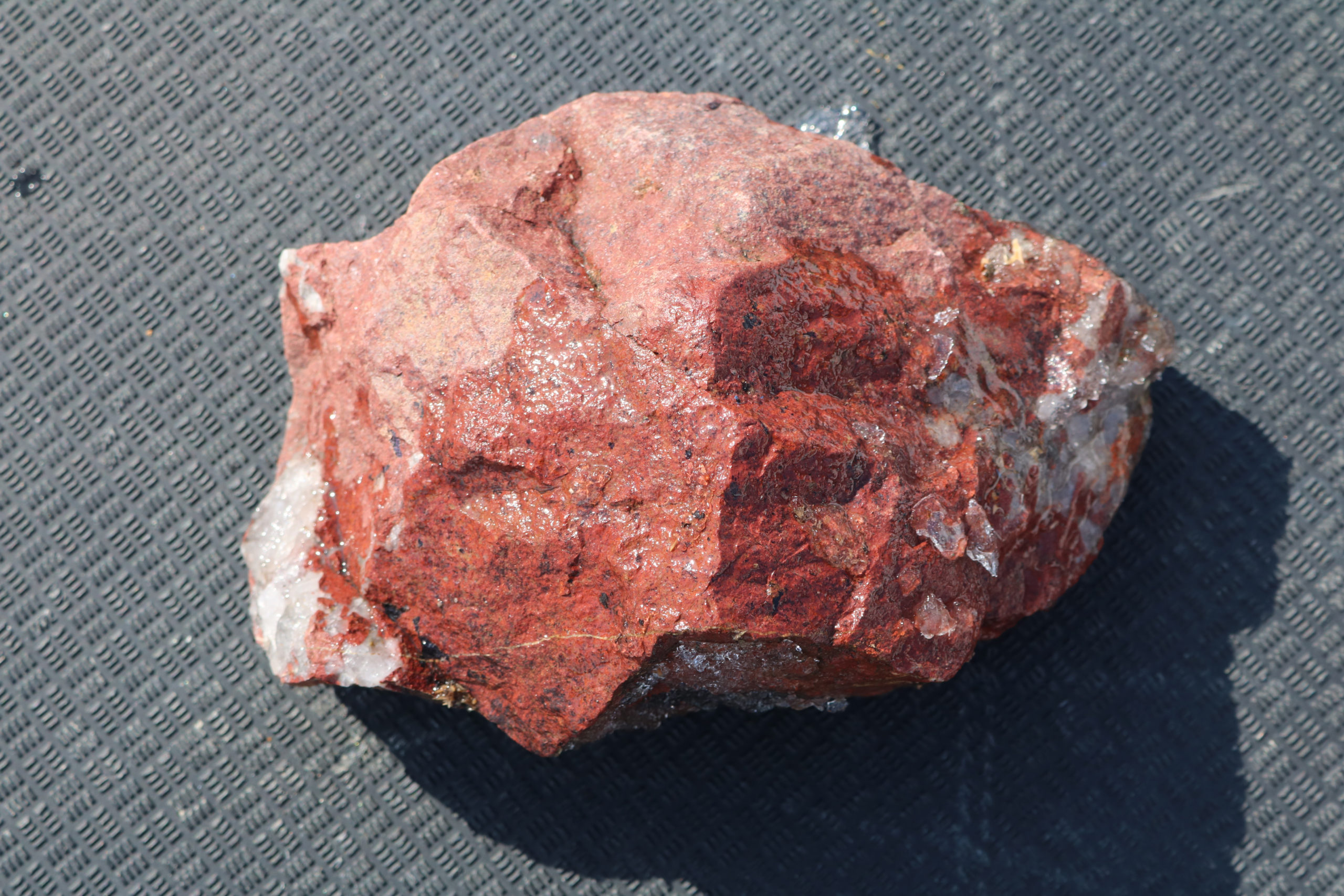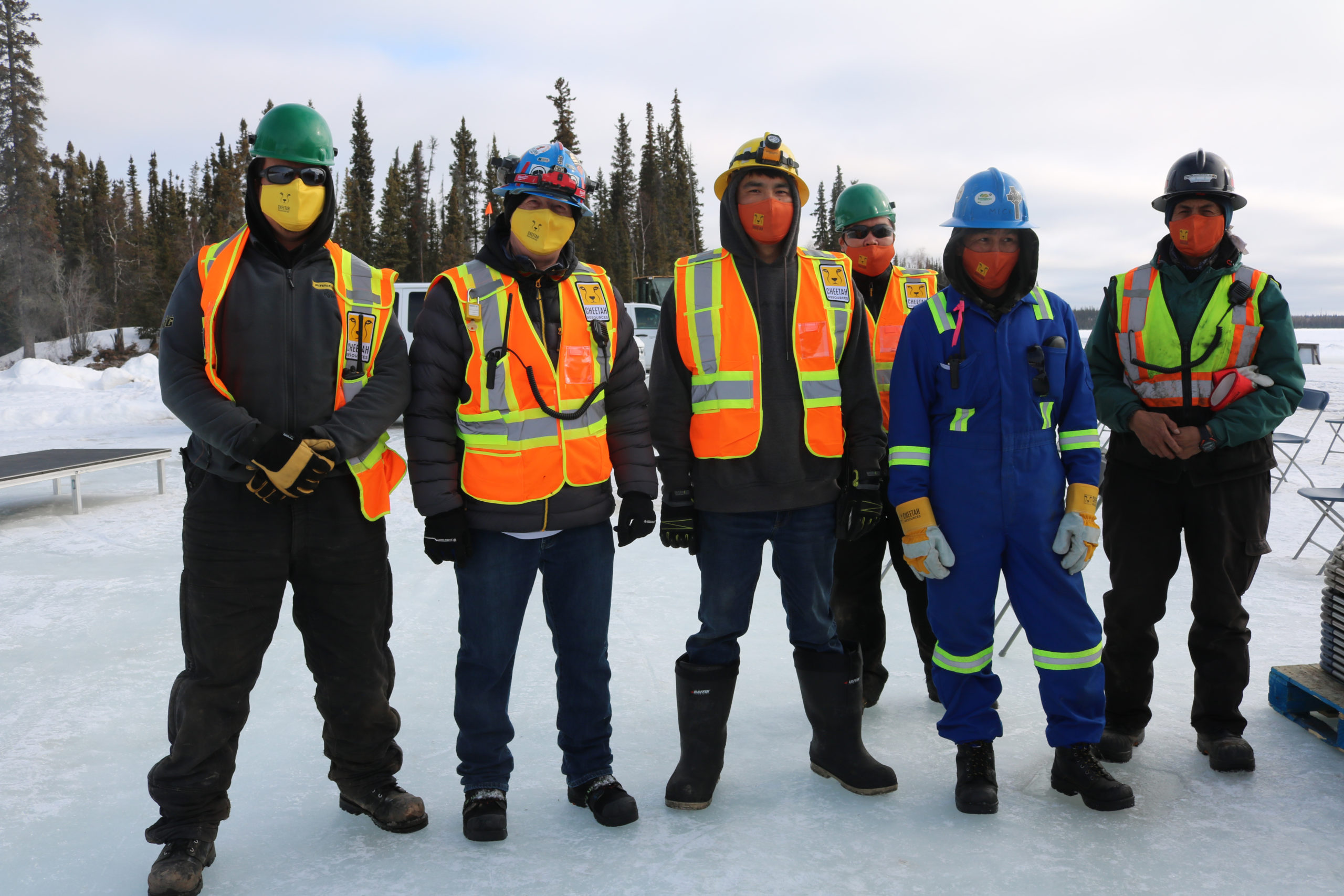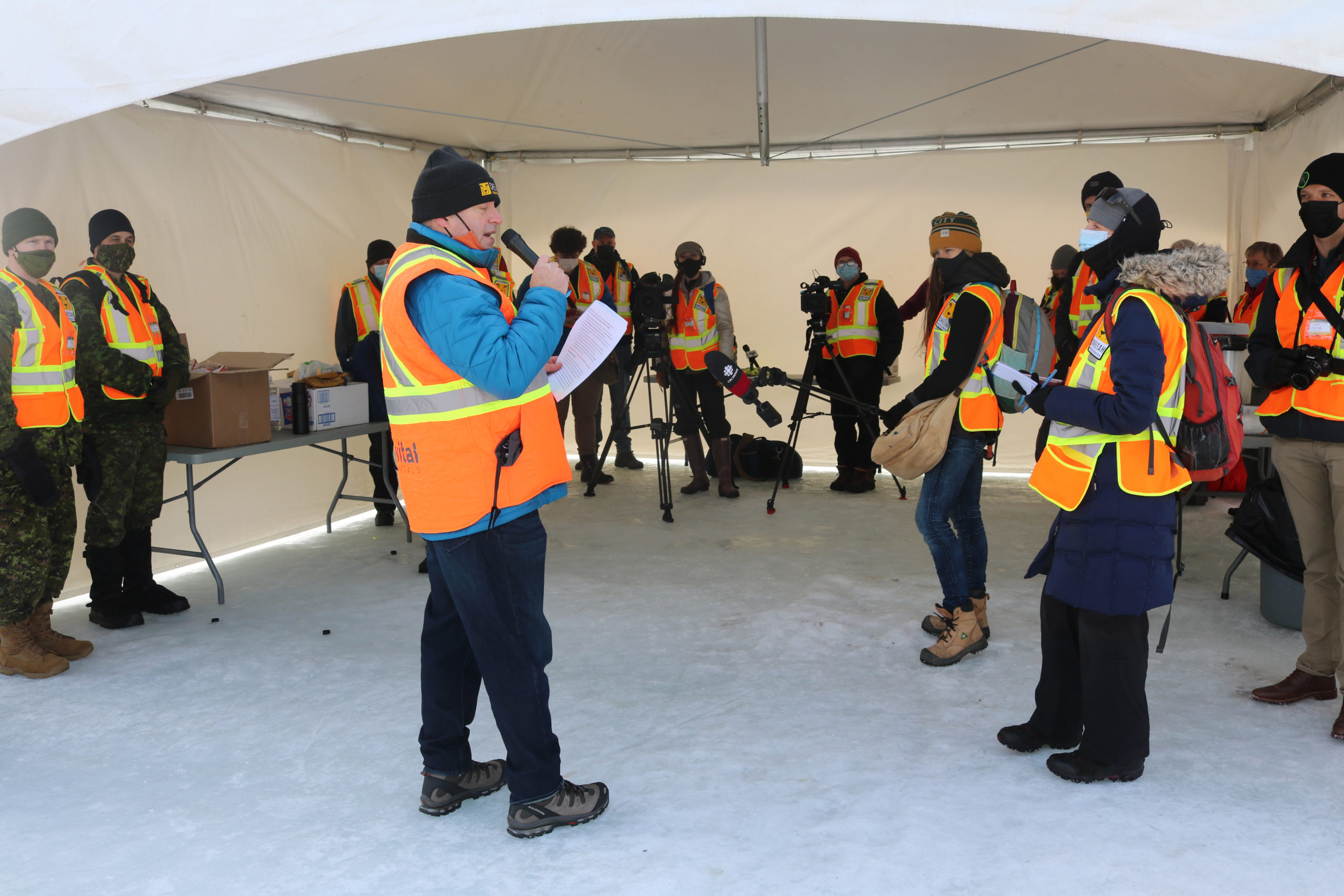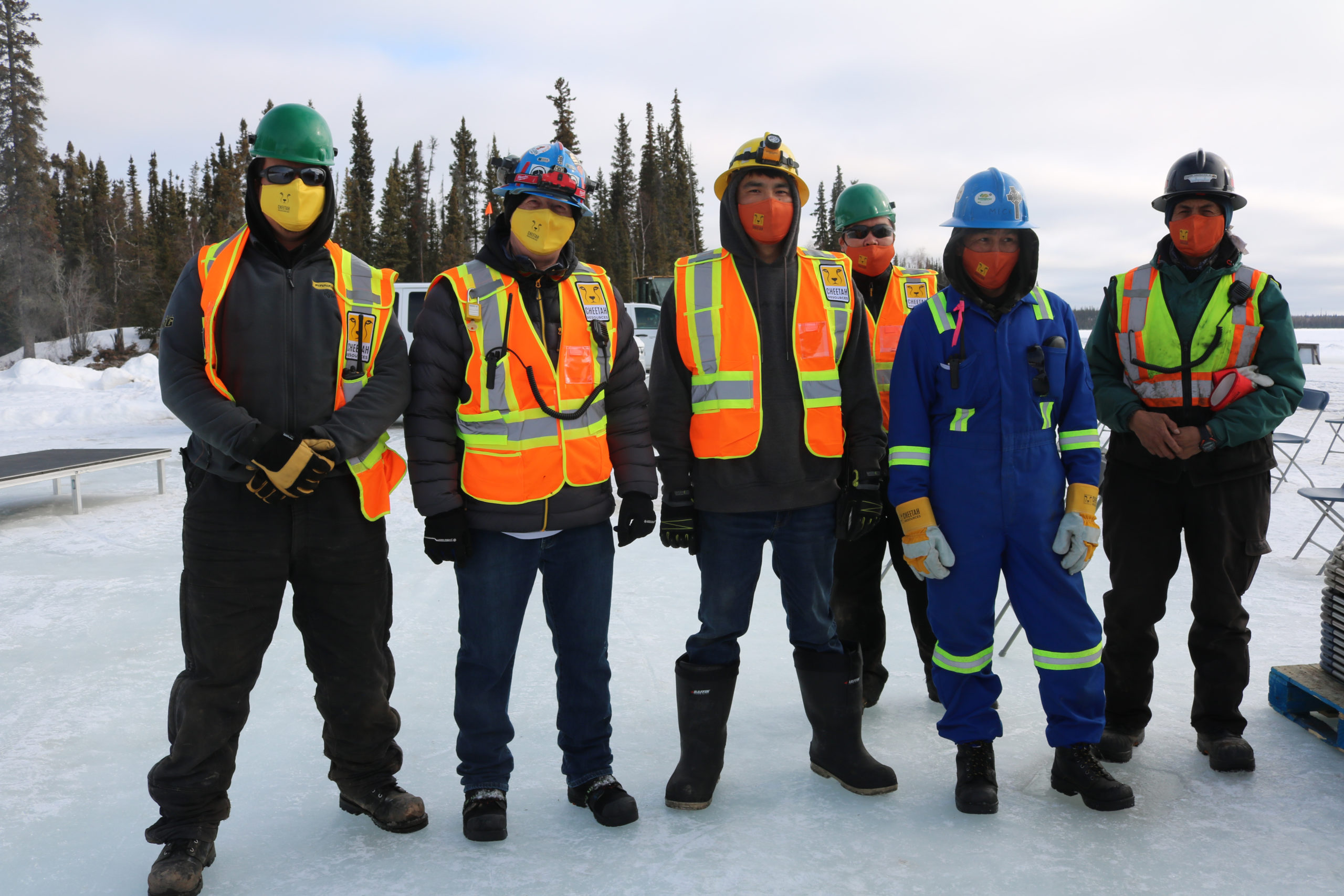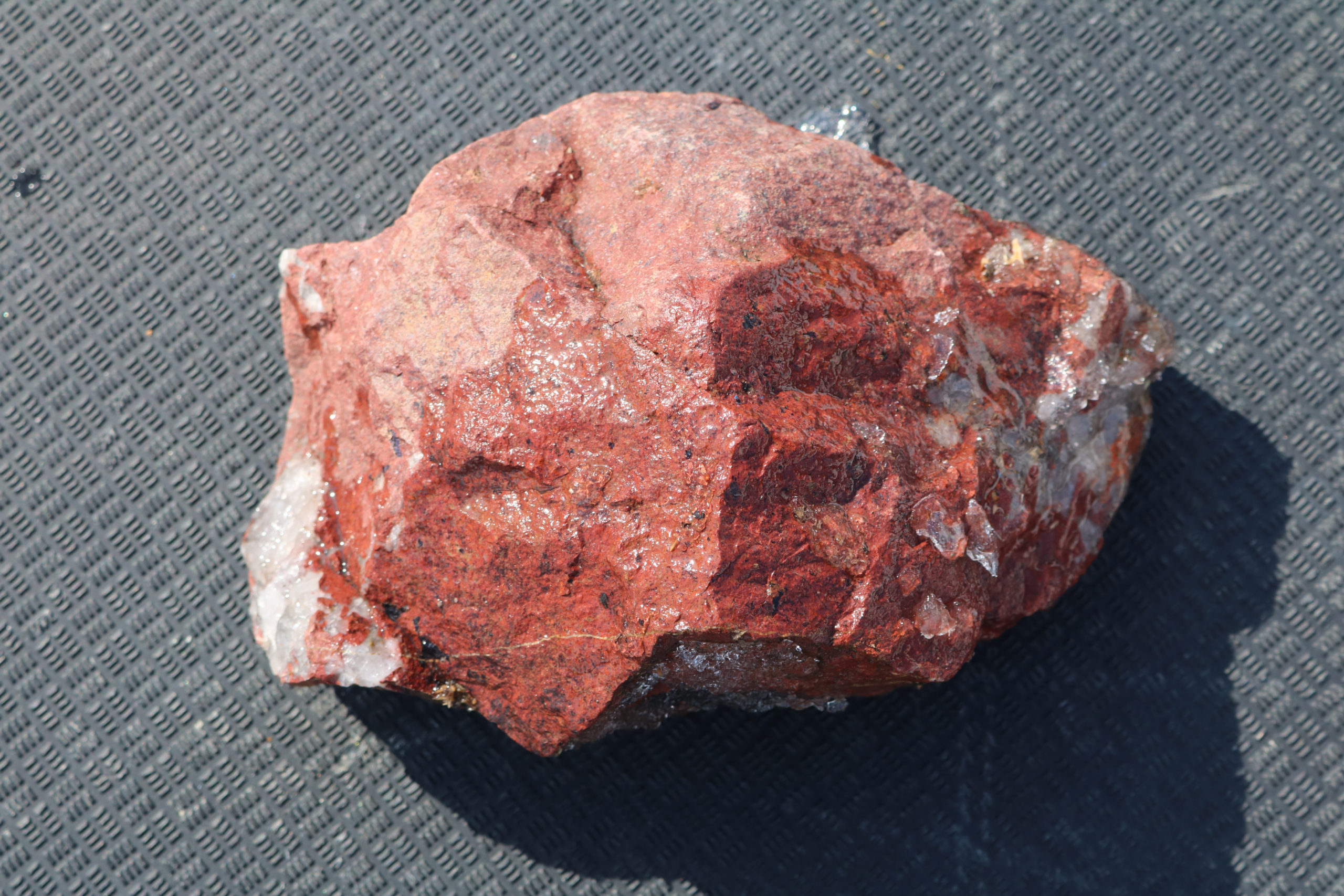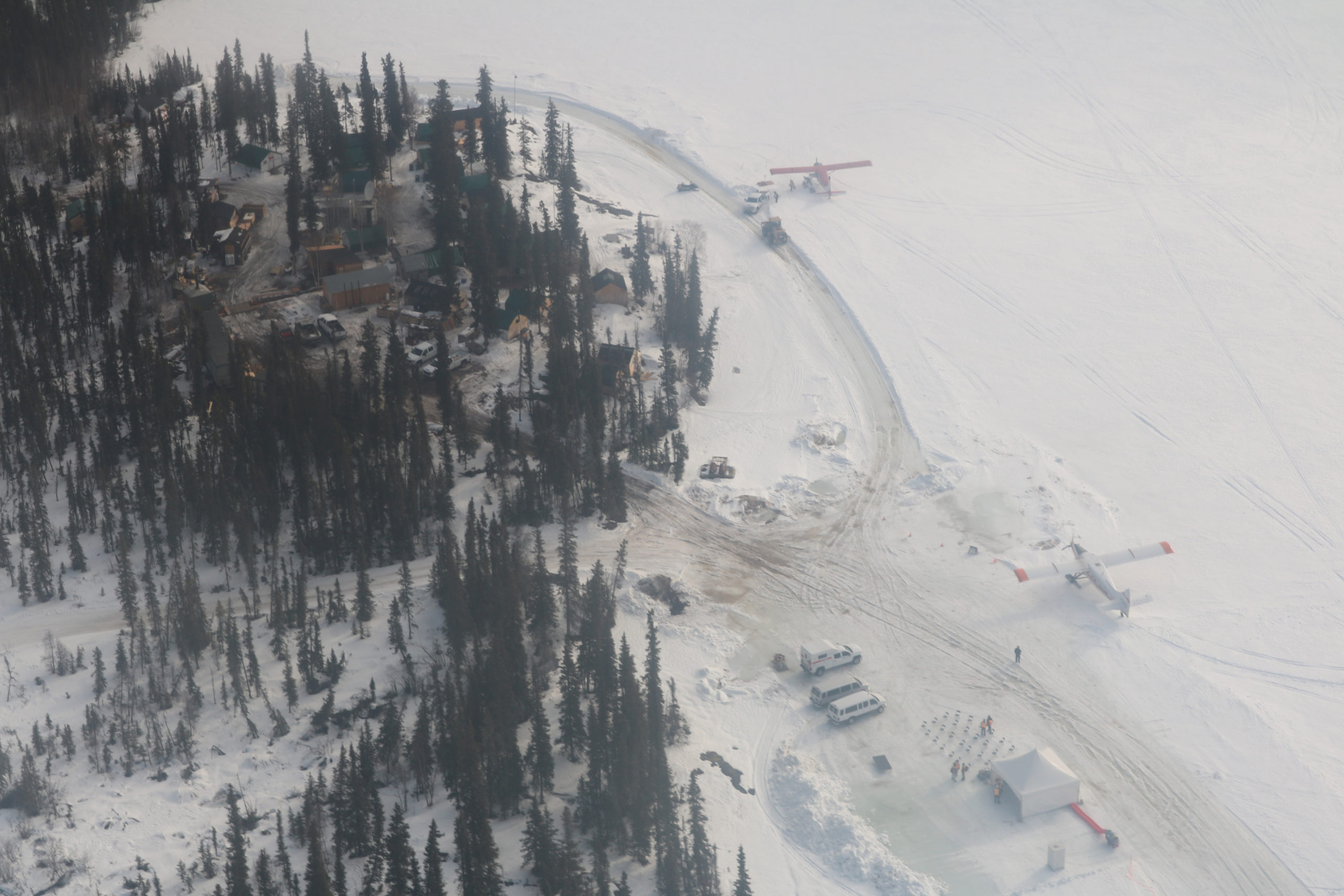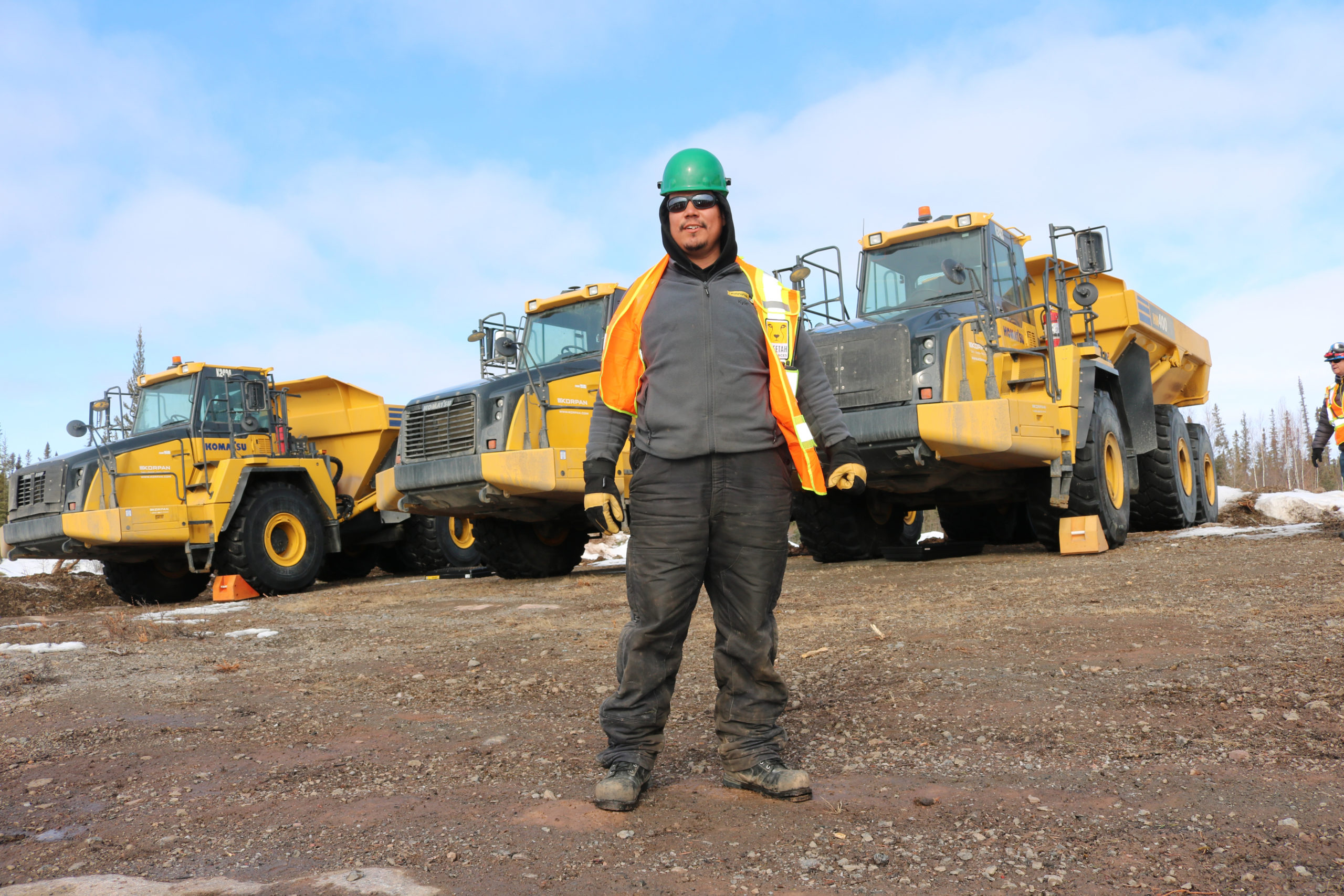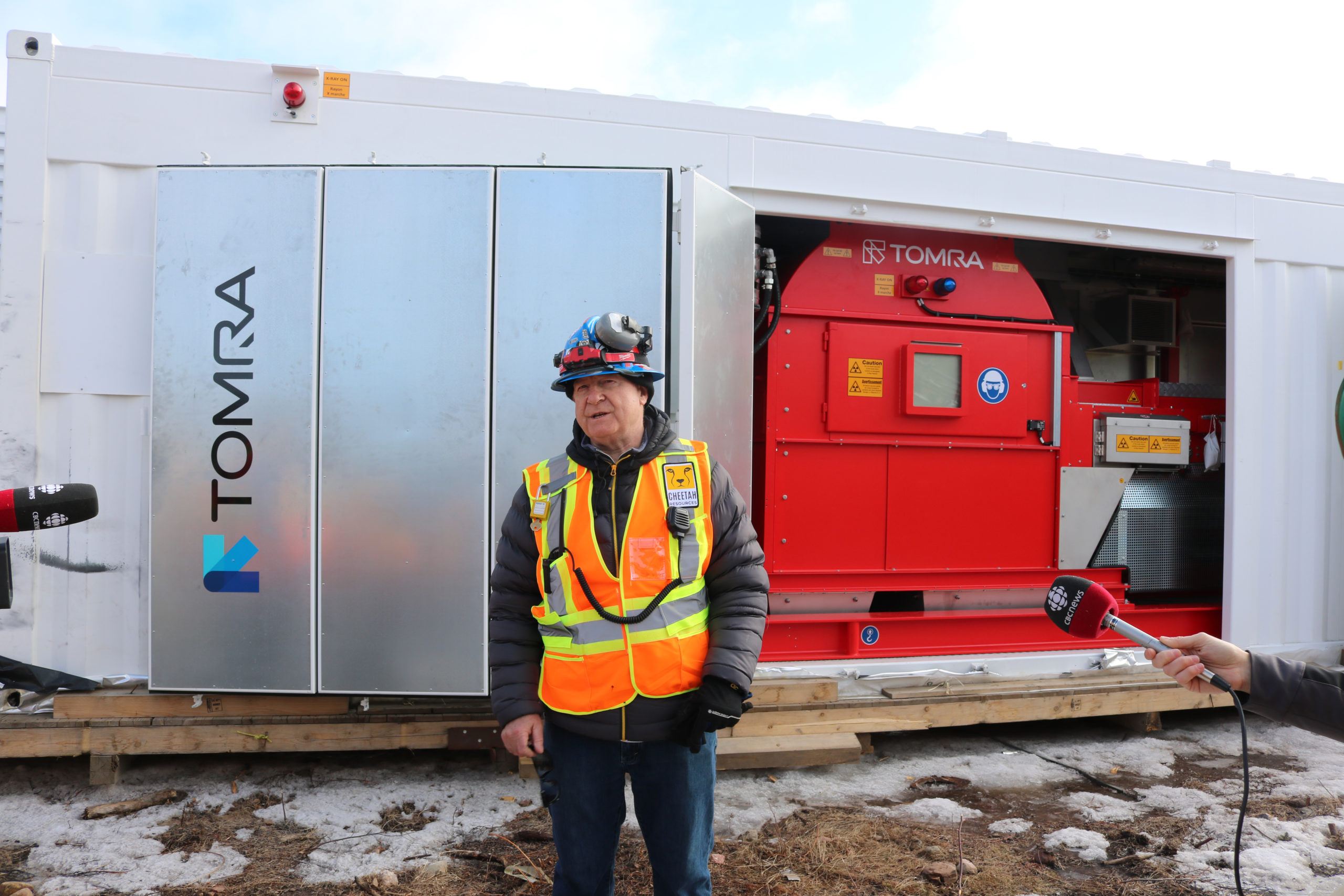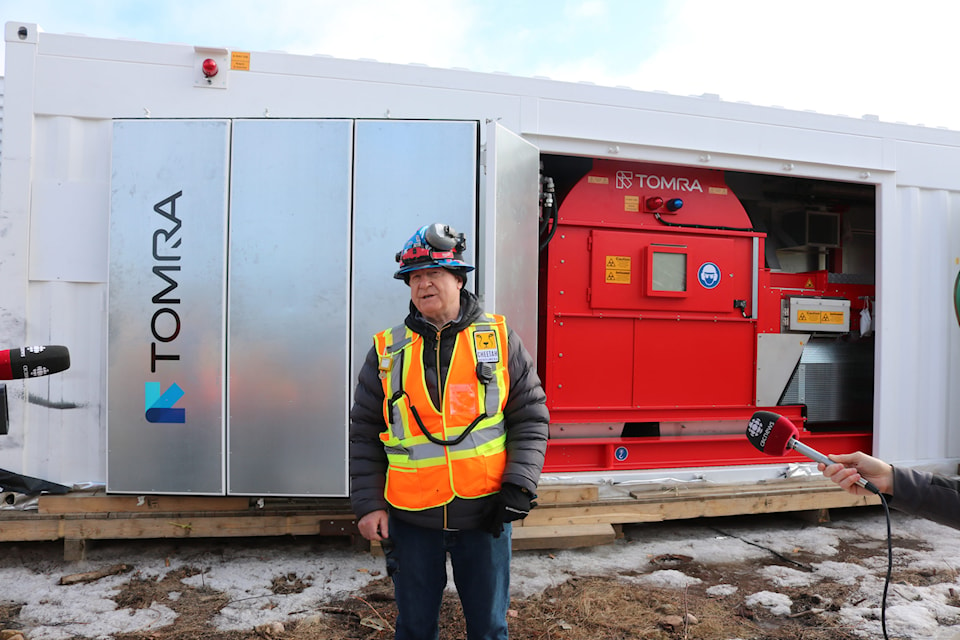The Nechalacho demonstration project overseen by Cheetah Resources is weeks away from beginning production of Canada’s first rare earths.
Northern media representatives, government officials, regulatory officers and some members of Joint Task Force North participated in a fly-in tour hosted by the company at the work site near Thor Lake, 100 km east of Yellowknife, on Monday.
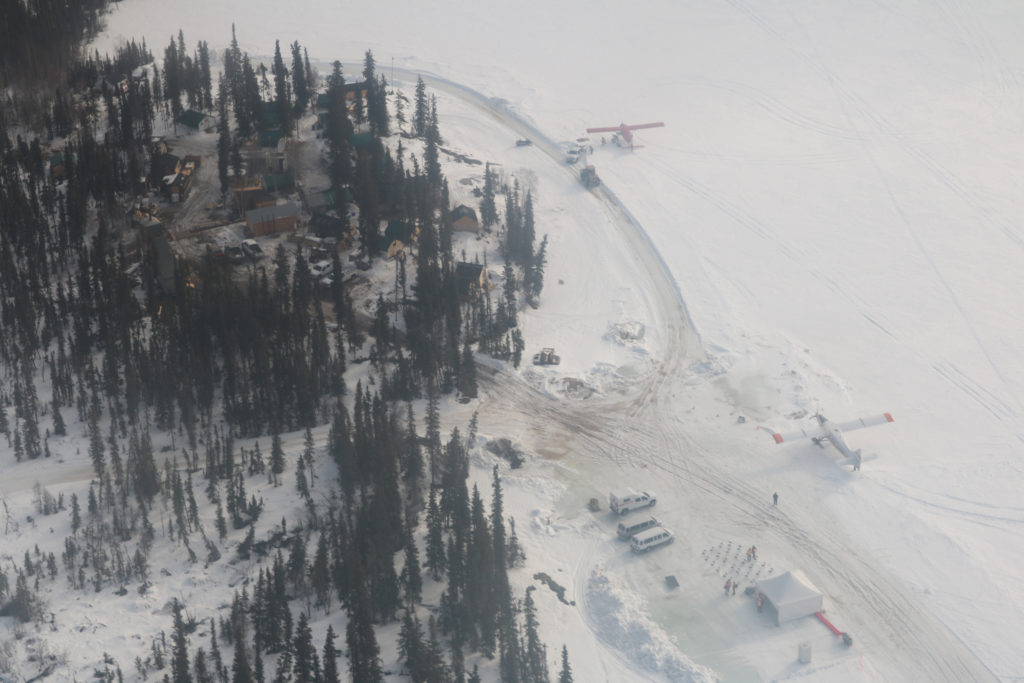
Simon Whitehouse/NNSL photo
It's been almost two years since Avalon Advanced Minerals and Australian-based Cheetah Resources entered into an agreement to start a small-scale mining operation at Nechalacho.
Since that time, Cheetah acquired two land permits and a water licence in early 2020, negotiated an extraction plant agreement with the Saskatchewan Research Council, attracted its first investors and identified a customer by late last year.
On Monday, visitors watched as the North T-Zone – a small deposit area at the demonstration project – was cleared by heavy equipment to begin near-surface extraction within weeks. Initial shipments of the mined rare earth minerals are expected to take place before freeze-up in the fall, according to David Connelly, vice-president of corporate affairs and strategy with Cheetah Resources.
Connelly explained that rare earths minerals will be mined, crushed and sorted on site before being shipped to Hay River to be transported by rail or truck to Saskatoon as a concentrated rare earth ore.
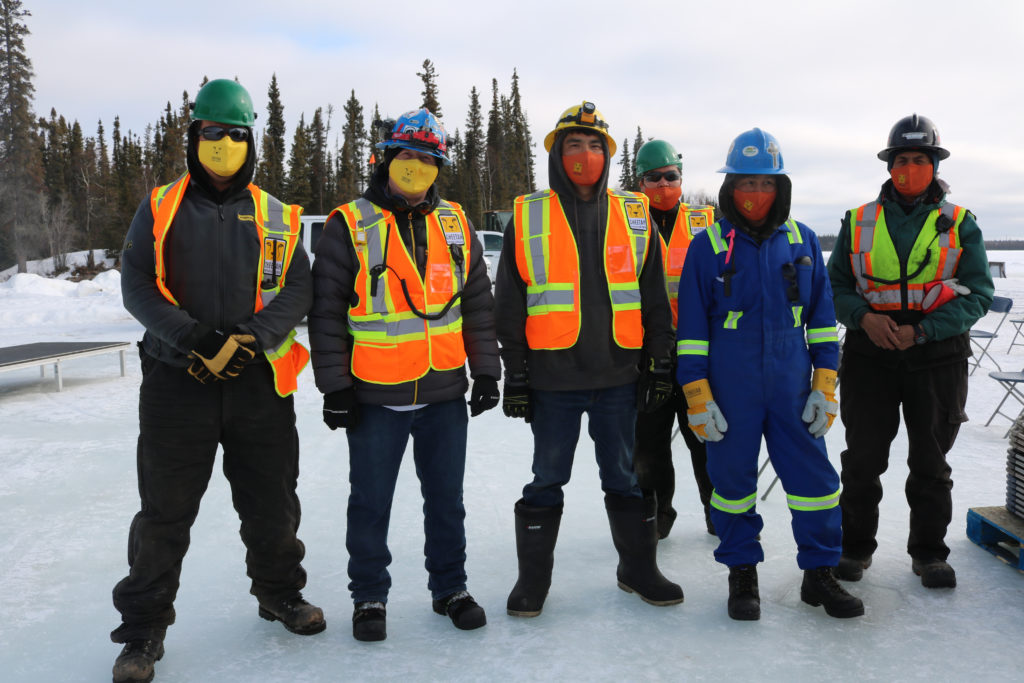
Simon Whitehouse/NNSL photo
From there, a processing plant in Saskatoon will convert the product into a rare earth precipitate, which can then be sold to Cheetah's sole customer – Norwegian-based REETec.
Origins of Nechalacho
Nechalacho is the Dene name for the area along the exposed north shore of the Hearne Channel on Great Slave Lake. It is located about 100 km from Yellowknife and 60 km from the In graham Trail.
80 per cent of the 50 people employed at Nechalacho are Indigenous.
The site has a long history of being explored, with uranium sought there during the uranium boom of the 1970s, according to Chris Pedersen, Cheetah Resources' senior project geologist. At that time, rare earth minerals were not as highly coveted as they are today.
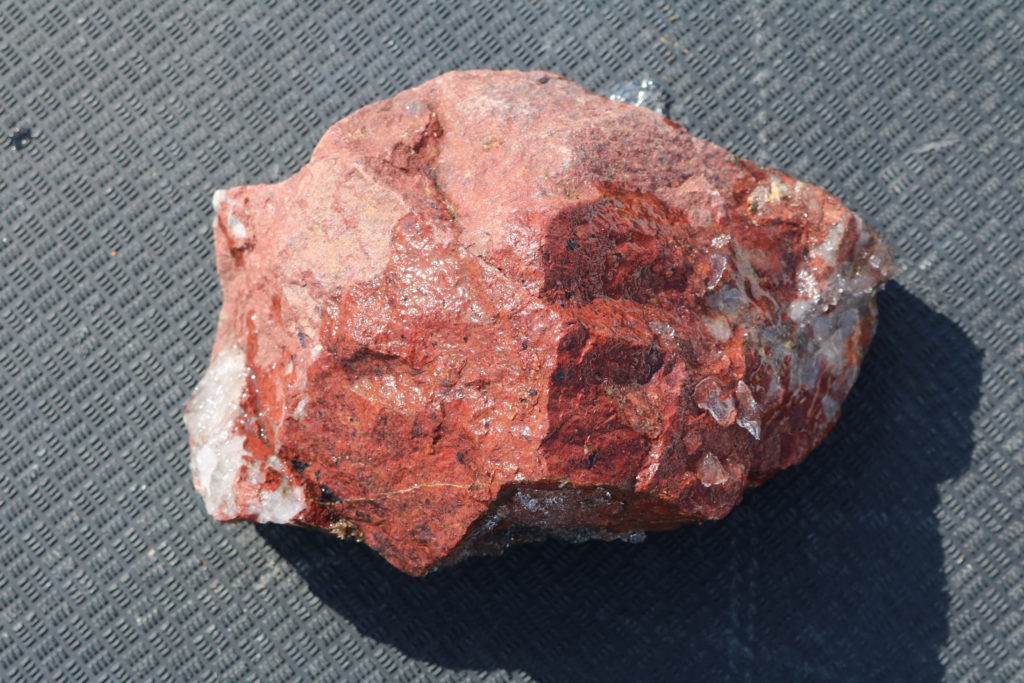
Simon Whitehouse/NNSL photo
“It turns out that Nechalacho is actually a very special place not only because of the great people that work here, but also because of the geology itself,” Pedersen said, noting the small, half-grapefruit shaped deposit.
Connelly said the small project is the first in Canada to begin production for a much-needed mineral product that is dominated by China.
As of this summer, $20 million is expected to have been spent on the mine's development, which is expected to pull 600,000 tonnes of rock from the ground this summer
Avalon Advanced Minerals owns the Basal Zone, which is 150 metres below the surface, while the near-surface minerals above belong to Cheetah Resources.
Det'on Cho Corporation is the contract miner for the demonstration project, which gives the Yellowknives Dene First Nation direct control of development on its traditional territory.
Other Indigenous groups also have a claim to the territory, including the Lutsel K’e Dene First Nation, the Deninu Kue First Nation of Fort Resolution, the Tlicho Government and the North Slave Metis Alliance.
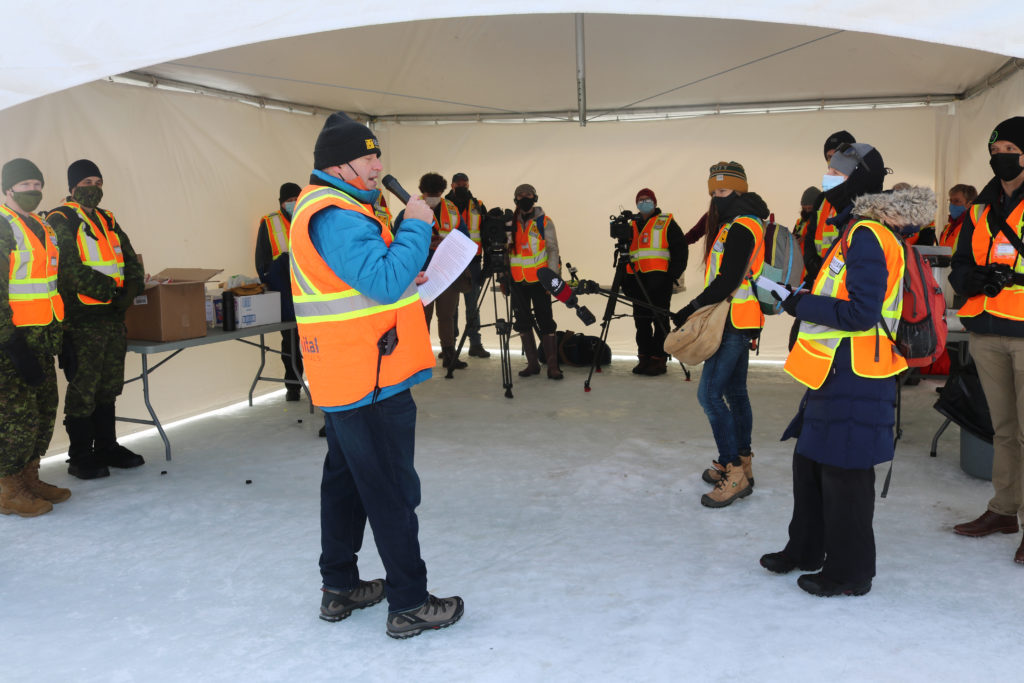
Simon Whitehouse/NNSL photo
After the North T-Zone is completed, a second phase known as Tardiff, about two-kilometres from the demonstration project, is highly anticipated to be the next source of minerals from the site, Connelly said.
That area is expected to produce five times the volume, expected to begin in 2024, Connelly said.
“Starting this summer we’ll be permitting the Tardiff project, which is the commercial scale up from the demonstration projects,” he said.
Although the project team leadership admits that the current rare earths development is extremely small and is not comparable to the diamond extraction that has dominated the NWT’s natural resource industry, Nechalacho still holds high significance for Canada’s contribution to global markets, Connelly said. It is also the first new metal mine in the NWT in decades.
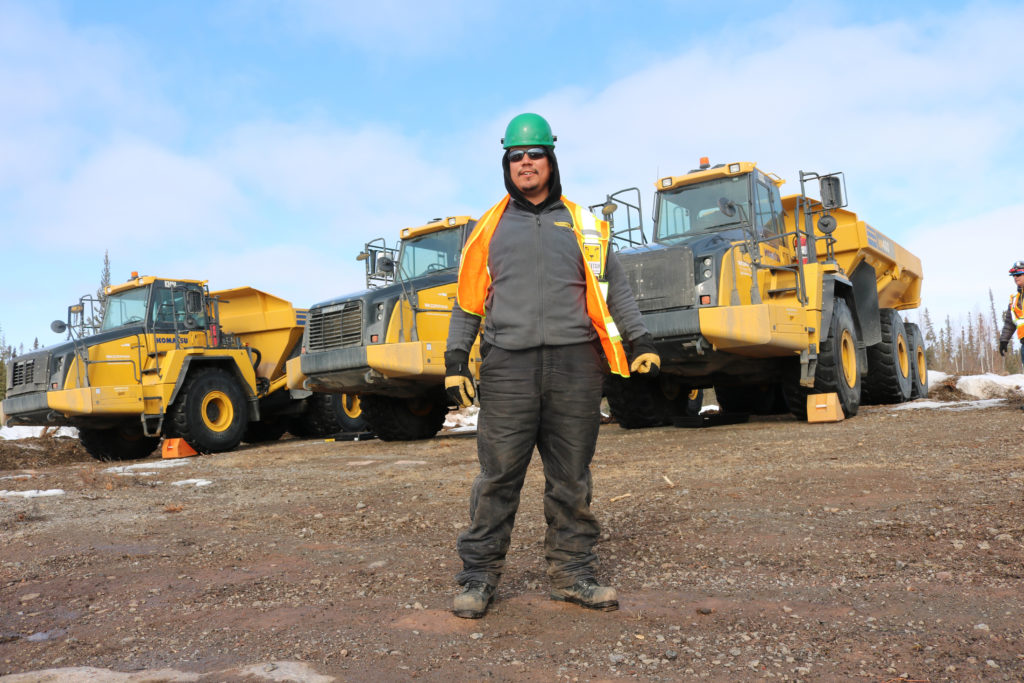
Simon Whitehouse/NNSL photo
“The world needs rare earths, and particularly the clean-tech and green-tech economies need rare earths,” Connelly explained. “Rare earths are essential for electric vehicles, renewable energy, computers, smart phones, monitors, medical devices, hard drives, and LED lights, to name a few.
“With the demand for electric vehicles and wind turbines, there's a growing shortage of rare earths, particularly outside of China. China currently controls the supply chain for about 80 percent of rare earths. Canada, Europe, Japan, Korea, the United States and the United Kingdom have all recently added rare earths to their list of critical minerals.”
Indigenous ownership and the environment
Cheetah Resources is banking on the mining demonstration project to prove its responsibility to regulatory agencies and Indigenous people.
“We can build a project while respecting the land and water and creating meaningful employment and substantial contracting opportunities,” Connelly said.
“We're also demonstrating to the global customer base outside China that the NWT and Cheetah’s mixed rare earth precipitated products can meet their stringent product specifications and not upset their individual processes.”
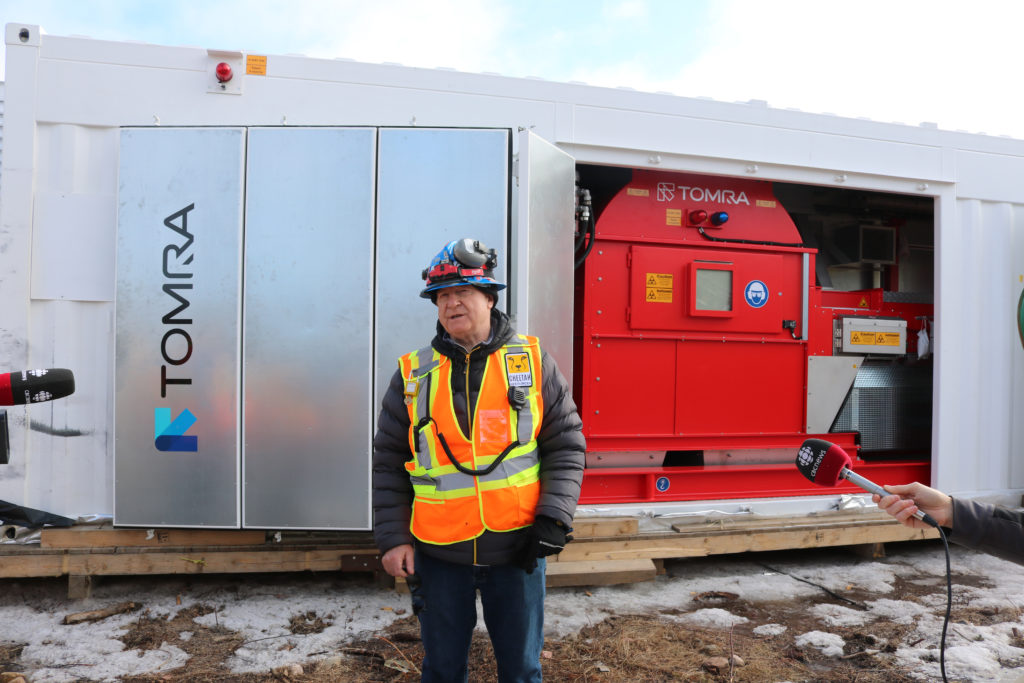
Simon Whitehouse/NNSL photo
In February, Cheetah Resources signed an $8-million mining services contract with Det'on Cho Nahanni Construction. The contract stipulates that the construction company will provide mining and equipment services for a single extraction campaign between March and September under the direction of Cheetah.
The previous year, Det'on Cho Nahanni signed an agreement with Cheetah to be the on-site operators of the mining the project.
